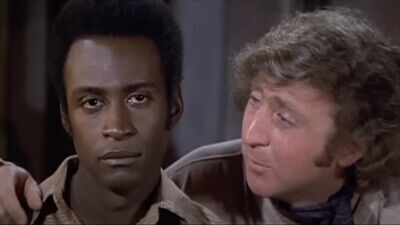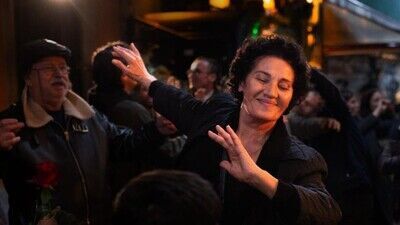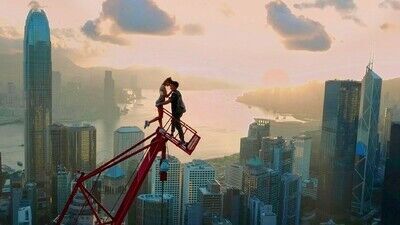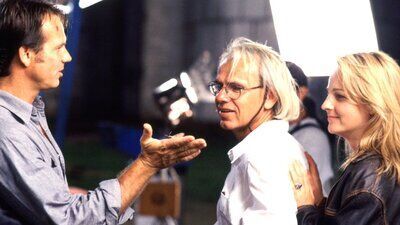If you keep your eyes fixed on Little you can see he’s barely holding it together. As Wilder works through the lines, he gets closer to losing it. You can tell it’s a blown take because the laughter is a spontaneous eruption, a thing that clearly wasn’t supposed to happen—and because Wilder glances up at the end, as if to ask, “Are we keeping this?”
They kept it, and the scene gave “Blazing Saddles” its warm heart.
This is a film that concerns itself with the behavior of bigots and the institutional racism that exploits their insecurity for profit. But the movie isn’t about that. It’s about the friendship between Bart and The Kid, which is the film’s illustration of how life should be. The scene sells the friendship that sells the film. It makes you believe these guys are really friends. A friend is someone who can make you laugh even when you don’t want to.
“Blazing Saddles,” which turned 50 this month, is one of the great American comedies, and one of the best films by Brooks, who was on an incredible hot streak that started with his 1968 debut “The Producers”. (Brooks also released “Young Frankenstein” in 1974, a two-fer on a quality level rarely matched by any filmmaker not named Steven Spielberg.) As Odie Henderson, a former contributor to this site, put it in a recent Texas Theatre podcast, there’s no point declaring that you couldn’t make “Blazing Saddles” today, because of course you couldn’t. “Blazing Saddles” is set in 1874, but it was really about race relations in the United States in 1974. Fifty years have passed. You could make a movie on the same themes, but that would be the extent of the similarity.

Rewatching “Blazing Saddles” again recently while reading Odie’s book Black Caesars and Foxy Cleopatras, I was struck by a couple of things.
One is the movie’s strong, simple point-of-view, which, despite the plethora of now-commercially unacceptable racial and ethnic and other slurs (very 1974!) feels advanced for that period. The 1970s saw film, TV, literature, music, and stand-up comedy pushing boundaries and comfort levels when it came to material about prejudice. (Richard Pryor, who co-wrote the film’s screenplay with Brooks, released multiple hit albums with the N-word in the title during the ‘70s, and there were many films that did the same; not only was this widely considered acceptable, newspapers carried ads.) But the specific brilliance of “Blazing Saddles” is that it seems to imagine itself as a product of some future popular culture in which there is common agreement not just that prejudice is unacceptable, but that anyone who believes otherwise is a fool.







Leave feedback about this